Rebutia cactus: description, types and cultivation

Many people like to grow a variety of indoor plants in their homes. Nowadays, more and more often beautiful decorative cacti are placed in dwellings. Today we will talk about plants called rebutia.


Peculiarities
Rebutia is a type of dwarf cactus. Argentina is considered its homeland, but in the wild it can grow in America, Asia, Australia. According to the description, such tiny cacti have beautiful spherical stems. However, they grow with a lot of thorns. The length of these plants most often does not exceed 5-7 centimeters.
Cactus flowers have a bright orange color (sometimes they grow with a red, yellow or pink tint). They grow one at a time. The shape of such buds is funnel-shaped. They are covered with a beautiful glossy sheen.
This cactus blooms from April to June. Each bud fully opens only on a sunny day. At night, the flowers roll up their petals. They are formed either at the base of the stem, or on its sides.
The first time the plant begins to bloom only in the second year.

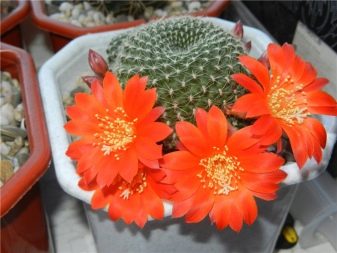
Varieties
Rebutia is represented by various types of indoor decorative cacti, each of which has its own special name:
- minuscule (tiny);
- muscle;
- golden spiky;
- dwarf;
- rebution of Krajnz;
- rebution of Marsoner;
- bristly;
- flavistil;
- rebution of Kupper;
- albiflora (white-flowered).


Minuscule (tiny)
Minuscule is a whole group of cacti of different subtypes. This variety has a spherical, slightly flattened stem, covered with white spines (while the central spine is absent). Its diameter can be up to 5 centimeters. Small tubercles on it are arranged in a spiral.
The flowers of this species are large. They are bright red or crimson in color. After flowering, small red berries appear on the cactus. Minuscule is subdivided into several more types. Senilis is distinguished among them. Such a cactus grows with elongated soft white spines. And the flowers of this variety are distinguished by a richer and brighter red hue.


Also in this group, the Wessner variety is distinguished. It is distinguished by a more elongated stem, which has a cylindrical shape. Its diameter can reach 8-10 centimeters, and its height is 7 centimeters. Compared to other types, the Wessner rebutia has a more intense bright green color on the stem. It has central spines, but they are poorly expressed. The flowers are red with a corolla. Their diameter is 4-5 cm.
This group also includes rebution of Violaciflora. It is distinguished by beautiful red-purple large flowers. Moreover, their petals, after full disclosure, are strongly bent outward. This species has abundant flowering. It begins in early spring.


Muscle
The flowers of this variety grow bright orange in color and have a slightly elongated funnel shape. The diameter of the opened flower can reach 6 cm. The surface of such a cactus is completely covered with gray-white soft and fluffy spines that are intertwined.


Gold-prickly
It looks like a spherical cactus of rich green color. Its thickness can be 5-7 centimeters.The surface of this houseplant is covered with sharp, long, yellow spines. Gold-spiked rebutia it is distinguished by abundant flowering. After full disclosure, the flowers turn bright yellow with a slight red tint. They grow with a corolla.


Dwarf
The stem has a cylindrical, slightly elongated shape. Its height does not exceed 2 cm, it is completely covered with long and small white spines. The flowers are bright red. Sometimes they have a slight orange tint. The shape of the buds is funnel-shaped. The pistil and stamens of the cactus are yellow.


Rebuzia of Krajnza
This cactus has the shape of a ball of light green color. Its height does not exceed 4-5 centimeters. The spines on it are gray-white. They grow small and intertwine. The flowers are shaped like a deep funnel. They are painted in a bright red tone. The buds are almost the same size as the stem.


Rebution of Marsonera
Light green spherical stem covered with small tubercles. In addition, small brown thorns can be seen on it. This variety blooms in spring. Thin elongated petals are painted in bright yellow tones. They grow with a corolla. The shape of the flowers is funnel-shaped.
Such rebution does not tolerate temperature drops and temperature drops.


Bristly
On the stem you can see a dense network of gray-white bristle spines that intertwine with each other. The flowers are funnel-shaped. Their inner part is painted in a golden-red hue. The outer part grows brown. This species blooms from late spring to mid-summer.


Flavistila
The stem of this variety grows in the form of a slightly flattened ball. Its diameter reaches 5-6 cm, it is covered with a large number of thin elongated gray spines. Long petals, rounded to the ends, of a red, bright color. The diameter of each flower can be up to 4 centimeters. The pistil and stamens are white-yellow.

Rebution of Kupper
It is a miniature cactus with a rich green color. It is covered with numerous thin and long intertwining spines. The flowers are large. They are red in color with a slight orange or yellow tint. The stamens and pistil are yellow-white.


Albiflora (white-flowered)
Small stems are completely covered with a fluffy white coating. Large-sized snow-white buds. Their diameter reaches 4-6 cm.The petals can appear with a slight pink or cream tint.

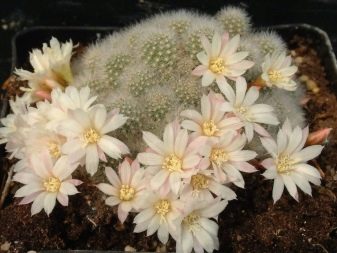
Care
If you want to grow rebutia at home, then her care should be carefully monitored, including watering, feeding. Otherwise, the cactus will not be able to live long.
Watering
For the normal cultivation of such a cactus, it is worthwhile to ensure that the irrigation is uniform. Their number depends on the rate of evaporation of moisture from the soil and on the climate in the dwelling. In the summer, only one watering per week will be sufficient. But during extreme heat, their number can be slightly increased.
In winter, you need to monitor the temperature in the room where the plant is located. If it is warm, then watering can be minimized. It is recommended to moisturize the rebution clean water, previously settled for one day. You also need to take into account its temperature. It should be 2-3 degrees higher. You should not wash and spray the plant.
Dust is best removed with a soft dry brush.

Fertilizer
This type of cacti does not need to be fertilized at all. But in order to provide the plant with a more abundant and beautiful flowering, some top dressing should be applied. They do this from April to September. Remember that such procedures are recommended no more than once a month.
Top dressing is done non-concentrated solutions of special complexes intended for cacti. Moreover, they can be introduced only on a slightly moistened substrate in advance. In the cold season, fertilizers cannot be applied.Do not forget that you need to select feed with a minimum content or complete absence of nitrogen-containing compounds. After all, they can cause rotting of the root system.


Lighting
In order for a plant to look healthy and beautiful, it must receive enough light on a regular basis. The rebutia is not afraid of direct sunlight, so it can be safely placed on the southern windows.
If you put the cactus on the north windows, then you can use small fluorescent lamps. They will be able to provide the required lighting. If the rebutia does not receive a sufficient amount of light, then it will stretch strongly, as a result of which it will lose its beautiful decorative appearance. Also, the plant may stop blooming.
Pot
Before planting a cactus, you need to choose a suitable container for this. For such a houseplant, they are perfect wide pots of shallow depth. After all, their root system grows rapidly and requires more space.


Priming
Remember that planting or transplanting a cactus must be done only from dry land to dry. Watering the soil during this is prohibited. Prepared soil can be purchased at specialized stores. The soil can be made by yourself from peat, turf soil and clean sand. Place on the bottom of the container good drainage.
This cactus can be grown even outdoors. It will look great with garden decorative flowers. At the same time, the watering regime remains the same as for those plants that grow at home.
But in case of severe frosts and frequent heavy rains, the rebutia must be closed well. Otherwise, it will start to rot and eventually die.


Transfer
The best time to transplant this houseplant is spring. The procedure should be carried out Once every 2 years. It is carried out in the case of a strong growth of the stems. If by this time the buds have fully formed, then the transplant is postponed until the flowering ends. When carrying out such a procedure, the soil is left the same in which the cactus grew initially.
Reproduction
Rebutia multiplies easily with seeds. In this case, they are taken from cracked ripe fruits. They are pre-treated with a solution of potassium permanganate. They start to sprout pretty quickly. When young plants start to grow a little, they need to be transplanted into separate containers. But first, the pots are completely filled with a prepared mixture, which consists of turf soil, peat, river sand.
Rebutia can also multiply by lateral shoots. Indeed, with normal growth and development, a large number of shoots are formed on a cactus. In spring or summer, they can be carefully separated from the stem. It is better to treat damaged areas with charcoal. The collected shoots must be left to dry for 24 hours. After that, they are planted in moistened sand, which is heated in advance.


Diseases and pests
Often, such a cactus is subject to root decay. This happens due to excessive watering, too low temperatures in the room, or due to a large amount of nitrogen in the soil. To avoid root rot, there are some simple rules to follow.
So, remember that it is best to use loose soil, use good drainage.
Besides roots, cactus stems can also rot. This can happen due to frequent watering when the plant is dormant in a cool room. In this case, the soil is no longer moistened until the moment until the stem dries a little.

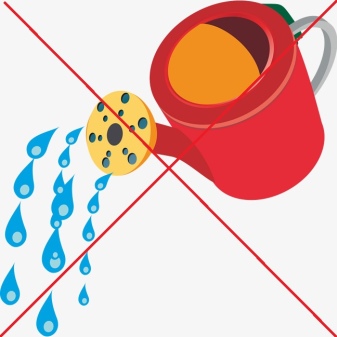
Sometimes cork structures form on the plant. They appear due to significant mechanical damage to the stems. They are also formed due to hypothermia, too little watering during the hot season. A cactus can be damaged by the appearance of a spider mite or mealybug.In this case, you first need to carefully remove all insects from the plant. This is done with a cloth dipped in an alcohol solution.
After removing the parasites, sick cacti should be treated. For this, it is better to use effective chemicals. So, you can use "Actellik" or "Fitoverm". As a preventative measure, you can periodically view the plant and check for pests and sometimes wipe it with a brush dipped in alcohol.


For more information about the cactus of the Rebutia variety, see the next video.








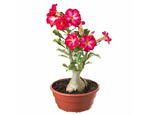




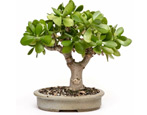




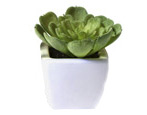








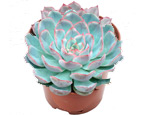



























The comment was sent successfully.